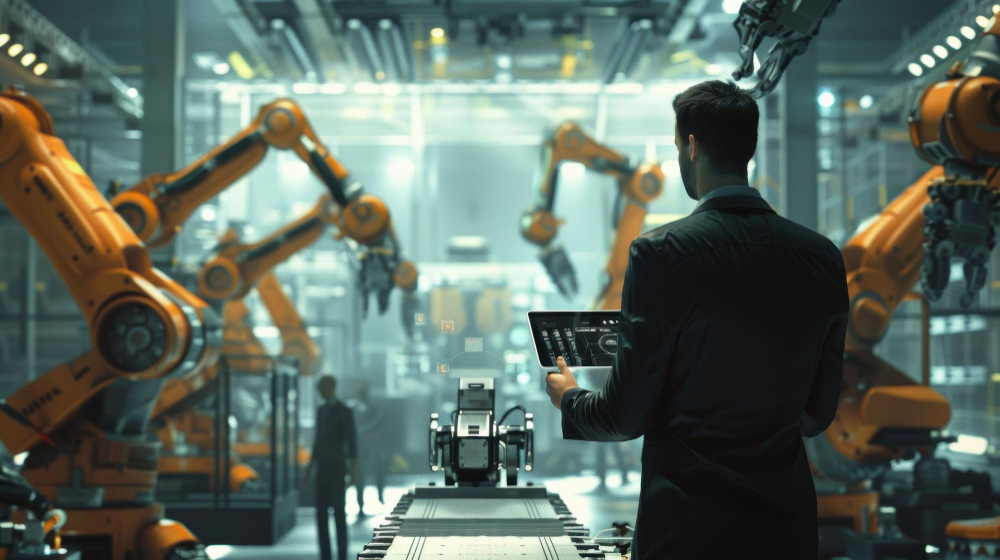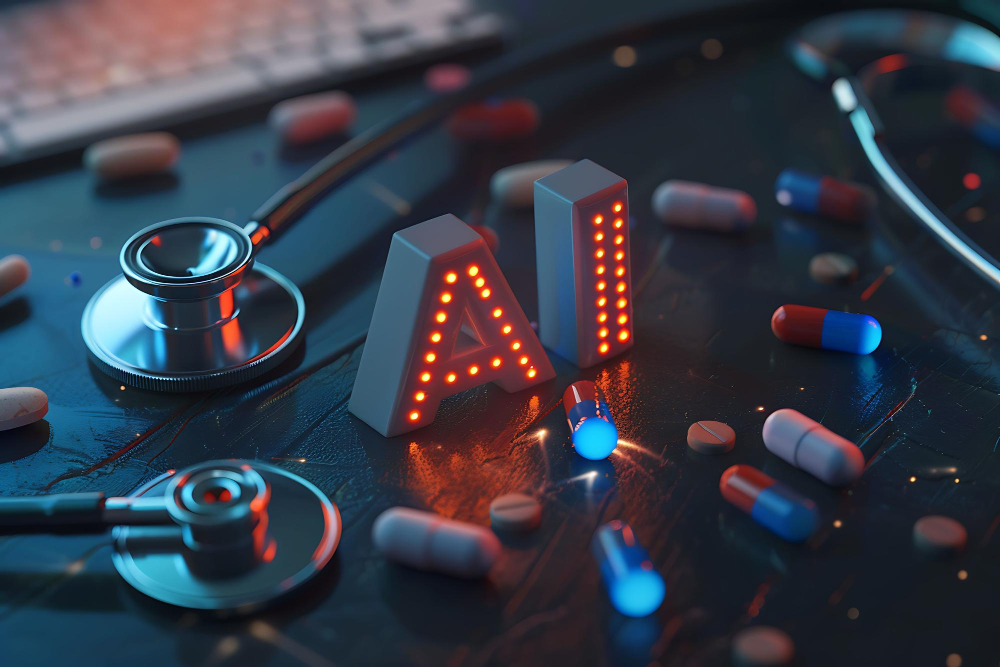- Blog
- June 5, 2024
AI-Powered Predictive Maintenance (Real-World Examples)

- Blog
- June 5, 2024
AI-Powered Predictive Maintenance (Real-World Examples)
Imagine a new era of manufacturing factories where machines don’t break down unexpectedly, but gracefully announce their need for maintenance well in advance. This is the ultimate power of Predictive Maintenance (PdM) with Artificial Intelligence (AI) – a breathtaking game-changing plot for the manufacturing industry.
Traditionally, maintenance followed a very rigid and reactive approach: fixing equipment only after it malfunctioned. This led to costly downtime, production delays, and potential safety hazards. PdM with AI flips the script, transitioning to a proactive approach that anticipates issues before they occur.
Key Elements of AI-Powered Predictive Maintenance
AI in PdM leverages the power of data analytics to identify subtle changes in equipment behavior that might indicate potential problems. Here’s how it works:
- Data Collection: Sensors embedded in machinery continuously gather data on factors like vibration, temperature, and energy consumption.
- AI Analysis: Machine learning algorithms analyze this data, identifying patterns and anomalies that could be precursors to failure.
- Predictive Insights: The AI system generates alerts and reports, notifying maintenance teams of potential issues and their predicted timeframe.
How Does AI Power Predictive Maintenance?
AI algorithms can analyze vast amounts of sensor data collected from manufacturing machinery. These include:
- Vibration: Changes in vibration patterns can indicate potential bearing wear or misalignment.
- Temperature: Deviations from standard operating temperatures might signal overheating or cooling system issues.
- Energy Consumption: Increased energy use could point to inefficiencies or impending component failure.
By analyzing the data in real-time, AI can identify trends and predict potential breakdowns with precise accuracy.
Real-world examples of AI in Predictive Maintenance
- Rolls-Royce and the Whispering Jets: The aerospace giant uses AI to analyze vast amounts of sensor data generated from jet engines during test runs. This enables them to predict potential issues and ensure the highest safety standards for their engines.
- Siemens leveraging Generative AI and Traditional AI: Earlier this year, Siemens enhanced its Senseye Predictive Maintenance solution with Generative AI. This upgrade makes the solution more conversational and intuitive, significantly improving user experience. Furthermore, the advanced machine learning capabilities accelerate the predictive maintenance process, ensuring more efficient and proactive machinery upkeep.
- GE Aviation’s Predix Platform: This cloud-based platform uses AI and machine learning to collect and analyze data from aircraft engines. Airlines can leverage Predix to predict maintenance needs and schedule proactive repairs, reducing costs and ensuring smooth operations.
Benefits of AI-powered Predictive Maintenance:
- Reduced Downtime: By addressing problems before they escalate, PdM significantly minimizes equipment downtime, keeping production lines running smoothly.
- Lower Maintenance Costs: Proactive maintenance reduces the need for emergency repairs and replacements, leading to significant cost savings.
- Improved Safety: Early detection of potential issues helps prevent catastrophic failures that could lead to safety hazards.
- Enhanced Operational Efficiency: PdM allows for more efficient use of maintenance resources and improved planning capabilities.
- Optimized Production Processes: By keeping equipment in top condition, PdM ensures consistent product quality and optimal production output.
Conclusion
AI-powered Predictive Maintenance is transforming the manufacturing industry. By leveraging this technology, manufacturers can gain a significant competitive advantage by minimizing downtime, optimizing operations, and maximizing overall efficiency. Combining traditional AI with Generative AI opens limitless possibilities for predictive maintenance (PdM), paving the way for a smarter, more efficient, and more sustainable manufacturing future.




